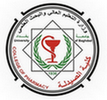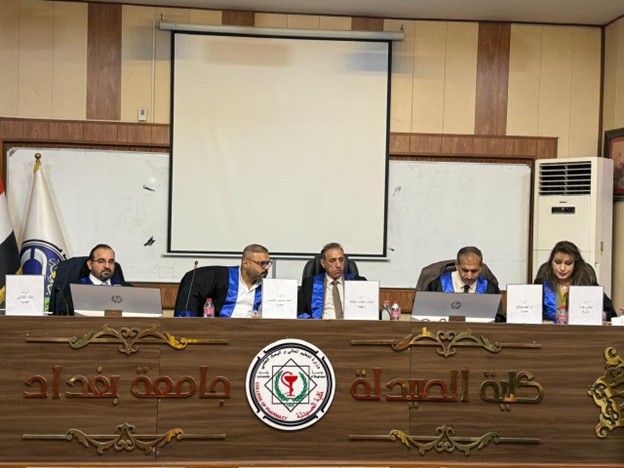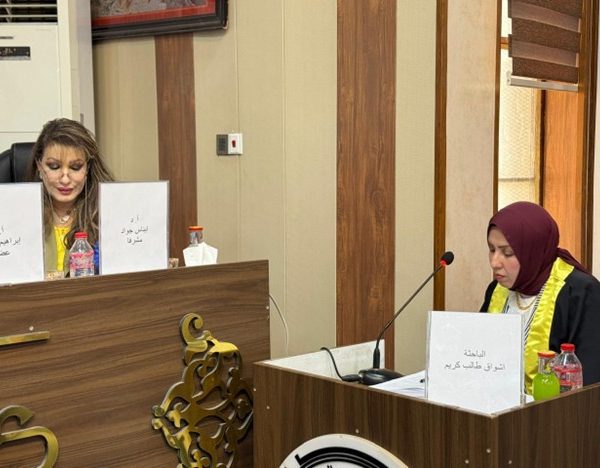The College of Pharmacy discussed the PhD dissertation entitled “Phytochemical Investigation and Cytotoxic Activity of Psidium guajava L. Leaves Extract (Family: Myrtaceae) Cultivated in Iraq” by student Ashwaq Talib Kareem and the supervisor Professor Dr. Enas Jawad Kadhim, at the Pharmacognosy and Medicinal Plants Department.
The study aimed to analyze the phytochemical composition and cytotoxic effects of Iraqi guava (Psidium guajava L.) leaves extract. This research represents the first comprehensive study conducted in Iraq focusing on the identification of phytochemicals and the use of various extraction methods to isolate bioactive compounds from guava leaves newly cultivated in the country.
The study included two primary extraction techniques: the ultrasonic bath method using 70% ethanol and the solvent-soaking method. The obtained extracts were further fractionated based on polarity to isolate active components. In addition, green silver nanoparticles were synthesized using a 70% ethanolic extract of guava leaves to evaluate their cytotoxic effects on human breast cancer (MCF-7) cells. Various analytical techniques were employed to identify the isolated compounds, including thin-layer chromatography (TLC), high-performance liquid chromatography (HPLC), Fourier-transform infrared spectroscopy (FTIR), liquid chromatography–mass spectrometry (LC-MS), proton nuclear magnetic resonance (¹H-NMR), and carbon-13 nuclear magnetic resonance (¹³C-NMR).
The results showed that the ultrasonic extraction method yielded a broader spectrum of chemical constituents compared to the soaking method. Phytochemical screening revealed the presence of several classes of bioactive compounds, such as flavonoids, phenolic acids, terpenoids, essential oils, and phytosterols. Each extract exhibited a distinct chemical profile: the petroleum ether fraction was rich in gamma-sitosterol, the essential oil fraction consisted of a diverse array of compounds, while the ethyl acetate fractions were particularly rich in flavonoids and phenolic acids, including quercetin, avicularin, guayferine, hyperin, naringenin, luteolin, caffeic acid, gallic acid, and kaempferol, as well as the butanol fraction, which also included quercetin, avicularin, guayferine, hyperin, caffeic acid, and luteolin. The flavonoid hyperin and ethyl acetate fraction exhibited cytotoxic activity against breast cancer (MCF-7) and prostate cancer (PC3) cell lines.
The study recommended further investigations to isolate and characterize additional bioactive compounds present in other parts of the guava plant.





